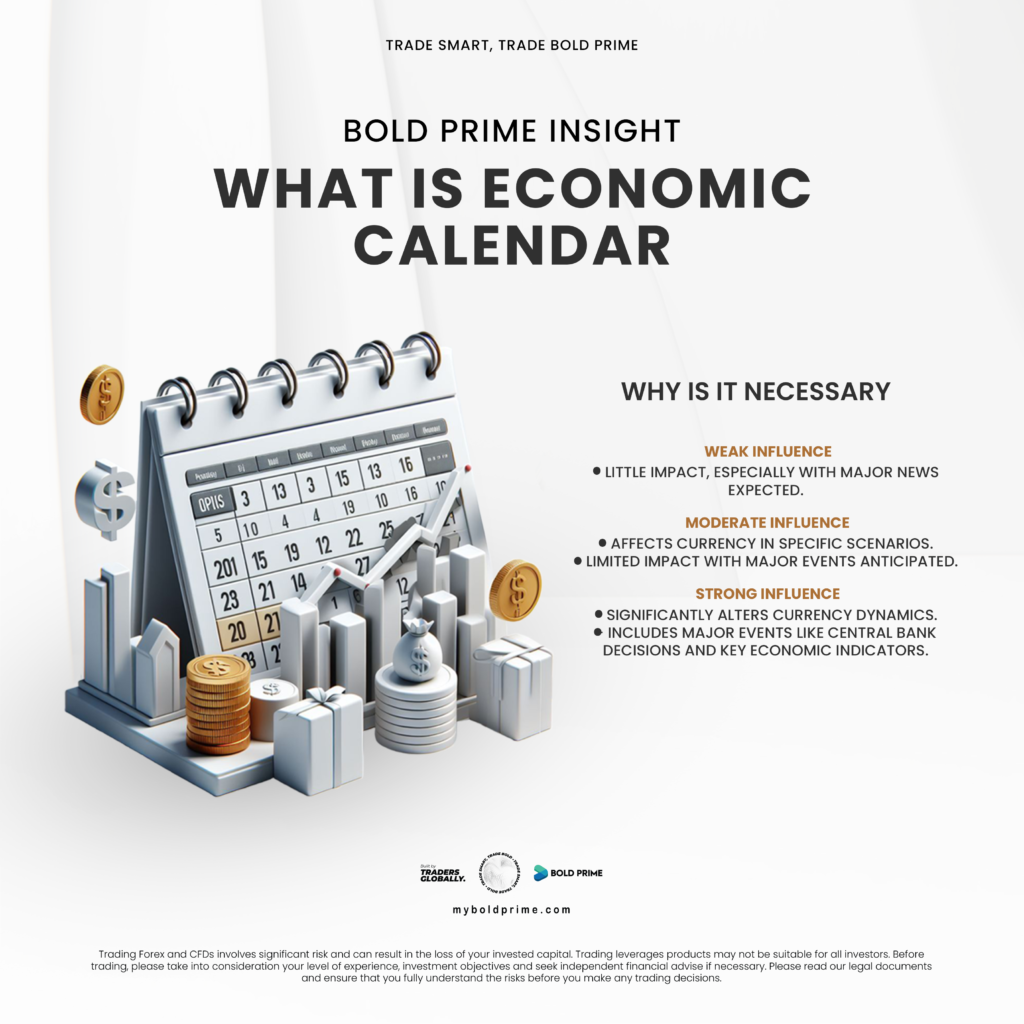What is Economic Calendar
The economic calendar is no longer a mysterious tool; it doesn’t require one to be an expert economist or trader to utilise it. Today, this calendar serves as another tool for market analysis. To phrase it differently, it’s not just a tool but also a collection of signals and indicators that can provide valuable insights into specific sectors of the global economy and forecast market reactions to such releases. By categorising the calendar’s publications into different groups, as detailed below, the market responses and fluctuations become even more evident.
The significance of occurrences on the economic calendar
The economic calendar serves as a comprehensive reflection of various news, statistical data, and significant events in the economies of leading countries around the world. Primarily, the most crucial statistics emanate from the largest economies, such as the United States, the euro area, Japan, Australia, Canada, and others, given their status as genuine newsmakers.
All entries on the economic calendar carry distinct importance, exerting varying degrees of influence on the market. These levels of importance can be categorised as follows:
News or statistics in this category typically have minimal impact on the market following publication. Nevertheless, in the absence of major news, slight fluctuations might be observed.
Under certain conditions, news of moderate importance may affect currency dynamics. However, its impact may be negligible if significant events are anticipated. Nonetheless, the simultaneous release of several moderately influential factors is believed to introduce some dynamism to currency pairs.
This category comprises news releases that, even individually, significantly influence currency dynamics. Cumulatively, they can alter the trend of specific instruments. Major economic events falling into this category include central bank meetings and decisions on interest rates, speeches by central bank heads, statistics on key global GDPs, Nonfarm Payrolls (indicating the number of new jobs in non-agricultural sectors of the US economy), and other similarly impactful events.
Typically, traders focus predominantly on events with strong influence. They anticipate substantial market fluctuations following the release of such impactful news, aiming to capitalise on these movements. A notable example is the release of Nonfarm Payrolls (NFP) data on the first Friday of each month. This day has been traditionally referred to as “trader payday” because significant and rapid movements occur if the published numbers deviate significantly from forecasts or previous data. Traders endeavour to predict and seize these movements in the market.
Utilising the economic calendar in trading strategies
There are various approaches to employing the economic calendar in trading. One method involves a trader reviewing the calendar before the trading day begins and closing positions ahead of the release of news with moderate to strong influence. Typically, new positions are not initiated until the market reacts to the news. The rationale behind this is evident: the heightened market volatility during such events can lead to unpredictable and significant price movements in both upward and downward directions, including price gaps. The market’s reaction usually spans a duration of 2 to 3 hours. Adhering to this practice proves beneficial for a trader’s emotional well-being and financial stability, especially for those new to the market.
Another strategy involves trading in alignment with news events. This necessitates a historical analysis of market responses to specific news. While it may initially seem tedious, time-consuming, and challenging, the process involves examining pre-news statistics and observing how the market or prices reacted to previous publications. Additionally, considering the statistics of prior expectations (often available on the calendar) is crucial. Occasionally, forecasters make errors, resulting in significant deviations from the expected numbers. In such cases, market reactions tend to be sharp and robust.
Taking a broader perspective on the calendar, one may find that crucial news data is embedded in seemingly inconspicuous, indirect statistics published beforehand, even if these have minimal direct impact on the market. However, such publications also serve as valuable hints for traders. Essentially, this process aligns with fundamental analysis, although it may not be as exhaustive as traditionally perceived.
Conclusion
Leveraging the economic calendar can greatly improve one’s trading. It’s crucial to bear in mind that the market can occasionally exhibit entirely unpredictable behaviour. Various unforeseen circumstances in the market often compel traders to adjust their strategies.








































